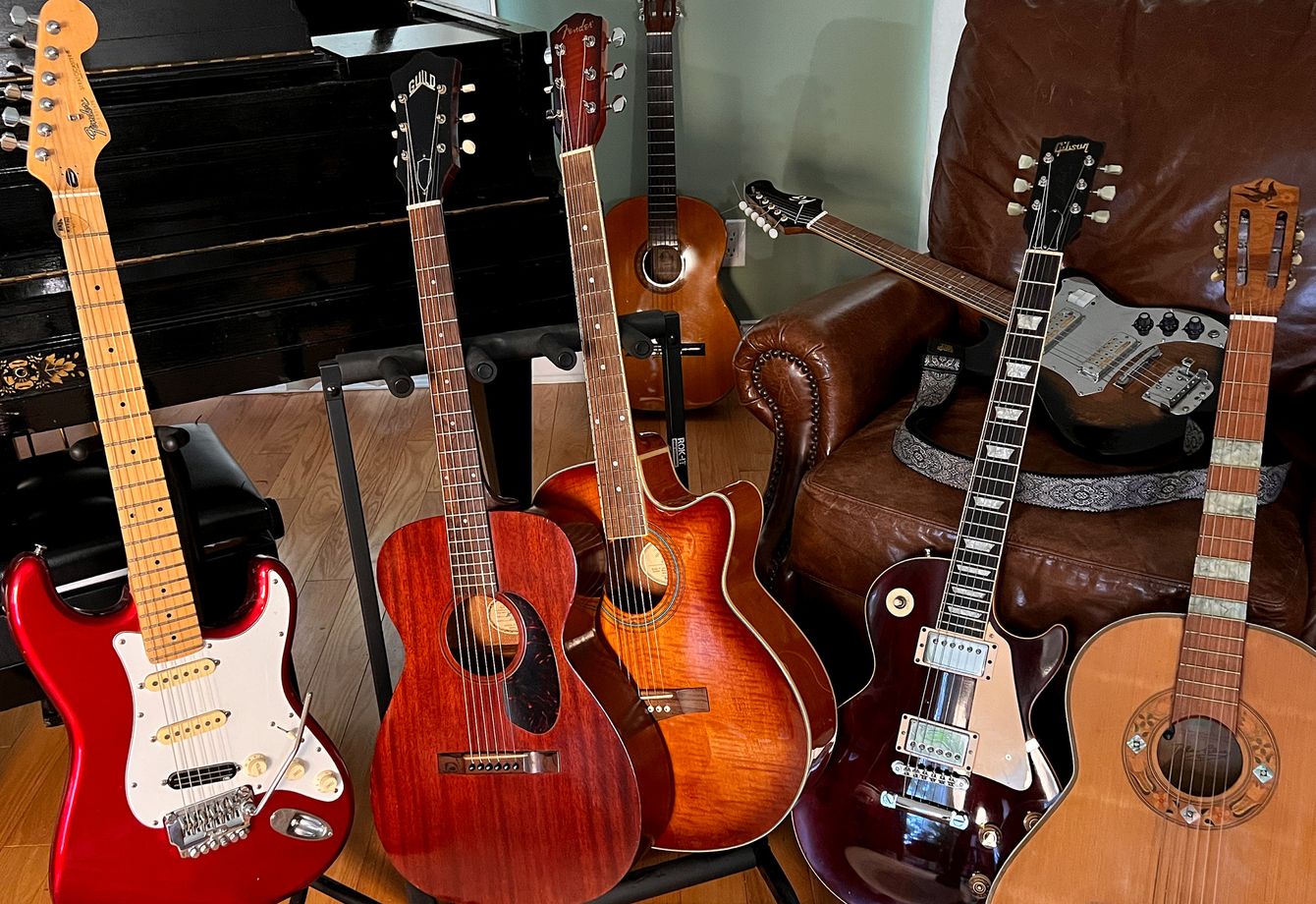Home>Production & Technology>Acoustic>Which Acoustic Property Makes All Different Instruments And Voices Sound Unique


Acoustic
Which Acoustic Property Makes All Different Instruments And Voices Sound Unique
Published: March 13, 2024
Discover how the acoustic properties of instruments and voices create unique sounds. Explore the key factors that contribute to the distinctiveness of acoustic music.
(Many of the links in this article redirect to a specific reviewed product. Your purchase of these products through affiliate links helps to generate commission for AudioLover.com, at no extra cost. Learn more)
Table of Contents
Introduction
Have you ever wondered why a violin sounds so different from a trumpet, or why one person's voice can be distinguished from another's? The answer lies in the fascinating world of acoustic properties. These properties play a crucial role in shaping the unique sound produced by various instruments and voices.
Acoustic properties refer to the characteristics of sound waves and how they interact with the environment and the objects producing them. These properties include frequency, amplitude, duration, and timbre, among others. Each of these elements contributes to the distinctiveness of a sound, making it possible for us to differentiate between a piano and a saxophone, or between the voices of our favorite singers.
Understanding the role of acoustic properties in sound production is essential for appreciating the diversity and richness of the auditory experiences we encounter every day. Whether it's the soothing melody of a guitar or the powerful resonance of a drum, the intricate interplay of acoustic properties gives each sound its own identity and emotional impact.
In this article, we will delve into the captivating realm of acoustic properties and explore how they influence the sounds we hear. By unraveling the mysteries behind these properties, we can gain a deeper appreciation for the artistry and science of sound production. Let's embark on a journey to uncover the secrets of acoustic properties and their profound impact on the world of music and voice.
The Role of Acoustic Properties in Sound Production
Acoustic properties play a pivotal role in the production and perception of sound. These properties encompass a range of characteristics that define the nature of sound waves and contribute to the unique qualities of different musical instruments and voices. Understanding the significance of these properties is essential for comprehending the intricacies of sound production and the diverse auditory experiences we encounter.
One fundamental acoustic property is frequency, which determines the pitch of a sound. The frequency of a sound wave corresponds to the rate of its vibrations, with higher frequencies producing higher-pitched sounds and lower frequencies yielding lower-pitched sounds. This property is crucial in distinguishing between the high-pitched notes of a flute and the deep tones of a cello, as well as in recognizing the unique pitch of individual voices.
Amplitude, another key acoustic property, influences the volume or loudness of a sound. The greater the amplitude of a sound wave, the louder the perceived volume. This property is integral to the dynamics of music and speech, allowing for the creation of soft, gentle melodies and powerful, resonant chords. The interplay of amplitudes contributes to the emotional impact of sound, shaping the intensity and expression conveyed through music and voice.
Duration, the temporal aspect of sound, also plays a significant role in sound production. The duration of a sound wave determines its length and influences the perception of rhythm, tempo, and articulation. Whether it's the sustained resonance of a violin note or the rhythmic pattern of a drumbeat, the duration of sound waves contributes to the overall structure and character of musical compositions and vocal performances.
Timbre, often described as the color or quality of sound, is a complex acoustic property that distinguishes one instrument or voice from another. It encompasses the unique harmonics and overtones present in a sound, giving each instrument and voice its distinctive timbre. The rich timbre of a saxophone, for example, differs markedly from the bright timbre of a trumpet, showcasing the diversity of acoustic properties at play in the realm of music and voice.
In essence, acoustic properties serve as the building blocks of sound, shaping its pitch, volume, duration, and timbre. The intricate interplay of these properties gives rise to the rich tapestry of auditory experiences that captivate and move us. By unraveling the role of acoustic properties in sound production, we gain a deeper appreciation for the artistry and science behind the diverse sounds that enrich our lives.
How Different Instruments and Voices Utilize Acoustic Properties
Different instruments and voices utilize acoustic properties in unique ways, giving rise to the rich diversity of sounds that define music and vocal performances. The interplay of frequency, amplitude, duration, and timbre allows each instrument and voice to express its distinct character and convey a myriad of emotions.
Instruments such as the violin, trumpet, piano, and drums harness the acoustic properties to create a symphony of sounds. The violin, with its high-frequency range and nuanced timbre, produces soaring melodies and expressive phrases, captivating listeners with its emotive resonance. In contrast, the trumpet, known for its bold and brassy timbre, utilizes its distinctive frequency and amplitude to command attention and infuse compositions with vibrant energy. The piano, with its wide dynamic range and diverse timbral possibilities, exploits acoustic properties to evoke a spectrum of emotions, from delicate intimacy to thunderous grandeur. Meanwhile, the drums, with their varied durations and percussive timbres, drive the rhythmic pulse of music, adding depth and vitality to musical arrangements.
Similarly, voices harness acoustic properties to convey a myriad of emotions and convey the nuances of storytelling and expression. From the soaring sopranos to the resonant bass voices, singers utilize their vocal frequencies and timbres to convey a wide range of emotions, from tender vulnerability to commanding authority. The amplitude and duration of vocal performances contribute to the dynamics and phrasing of musical and spoken narratives, allowing for the conveyance of subtle nuances and powerful climaxes.
In essence, the utilization of acoustic properties by different instruments and voices is a testament to the artistry and creativity inherent in sound production. By leveraging the unique characteristics of frequency, amplitude, duration, and timbre, musicians and vocalists craft captivating performances that resonate with audiences on a profound emotional level. The diverse ways in which instruments and voices harness acoustic properties exemplify the boundless creativity and expressive potential of the auditory arts, enriching our lives with a kaleidoscope of captivating sounds and stirring performances.
The Influence of Acoustic Properties on Sound Quality
The influence of acoustic properties on sound quality is profound and far-reaching, shaping the auditory experiences that captivate and move us. Acoustic properties, including frequency, amplitude, duration, and timbre, play a pivotal role in defining the richness, clarity, and emotional impact of sound.
Frequency, as a fundamental acoustic property, directly influences the perceived pitch and tonal characteristics of sound. The precise arrangement of frequencies determines the harmonic structure of musical notes and the tonal coloration of voices, contributing to the overall timbral quality of sound. Whether it's the shimmering high frequencies of a flute or the resonant low frequencies of a double bass, the interplay of frequencies shapes the tonal palette of music and voice, enriching the sonic tapestry with a diverse range of pitch variations.
Amplitude, another critical acoustic property, governs the volume and intensity of sound, thereby exerting a profound influence on sound quality. The dynamic interplay of amplitudes allows for the expression of subtle nuances and powerful crescendos, enhancing the emotional depth and expressive range of musical performances and vocal renditions. From the gentle whispers of a delicate melody to the thunderous roar of a symphonic climax, the manipulation of amplitudes imbues sound with a compelling sense of drama and emotional resonance.
Duration, the temporal aspect of sound, contributes to the rhythmic structure and articulation of musical compositions and vocal performances. The precise control of durations allows for the creation of intricate rhythmic patterns and expressive phrasing, shaping the cadence and flow of sound. Whether it's the sustained resonance of a violin note or the staccato bursts of a percussion ensemble, the manipulation of durations adds depth and vitality to sound, enhancing its overall quality and impact.
Timbre, often described as the color or texture of sound, is a complex acoustic property that profoundly influences sound quality. The unique harmonic and timbral characteristics of different instruments and voices are intricately tied to their distinct timbres, which define their sonic identities. The rich, resonant timbre of a cello, for instance, evokes a sense of warmth and depth, while the bright, piercing timbre of a trumpet commands attention with its vibrant energy. The manipulation of timbral qualities allows for the creation of diverse sonic textures and expressive nuances, enriching sound with a captivating array of tonal colors and emotive resonances.
In essence, the influence of acoustic properties on sound quality is a testament to the intricate interplay of scientific principles and artistic expression. By understanding and harnessing the diverse characteristics of frequency, amplitude, duration, and timbre, musicians and sound engineers can craft immersive auditory experiences that resonate with audiences on a profound emotional level. The profound influence of acoustic properties on sound quality underscores the remarkable depth and expressive potential of the auditory arts, enriching our lives with a kaleidoscope of captivating sounds and stirring performances.
Conclusion
In conclusion, the captivating realm of acoustic properties unveils the profound influence of frequency, amplitude, duration, and timbre on the diverse sounds that enrich our lives. From the soaring melodies of violins to the resonant timbres of voices, acoustic properties shape the unique identities and emotional impact of musical instruments and vocal performances. The interplay of these properties serves as the foundation for the artistry and science of sound production, allowing for the creation of captivating auditory experiences that resonate with audiences on a profound emotional level.
By unraveling the role of acoustic properties in sound production, we gain a deeper appreciation for the boundless creativity and expressive potential of the auditory arts. The intricate nuances of frequency, amplitude, duration, and timbre exemplify the remarkable depth and richness of sound, showcasing the diverse tonal colors and emotive resonances that captivate and move us. Whether it's the delicate intricacies of a piano sonata or the thunderous power of a symphonic crescendo, acoustic properties infuse sound with a compelling sense of drama and emotional depth, enriching our lives with a kaleidoscope of captivating sounds and stirring performances.
Furthermore, the influence of acoustic properties on sound quality underscores the seamless integration of scientific principles and artistic expression. The precise manipulation of frequencies, amplitudes, durations, and timbres allows for the creation of immersive auditory experiences that transcend cultural and linguistic barriers, resonating with audiences across the globe. The profound impact of acoustic properties on sound quality highlights the remarkable potential of the auditory arts to evoke a spectrum of emotions and convey profound narratives, enriching our lives with the transformative power of sound.
In essence, the exploration of acoustic properties illuminates the intricate tapestry of sound that surrounds us, inviting us to immerse ourselves in the boundless creativity and expressive diversity of music and voice. As we continue to unravel the mysteries behind these properties, we embark on a journey of discovery and appreciation for the artistry and science of sound production, embracing the profound impact of acoustic properties on the world of music and voice.











